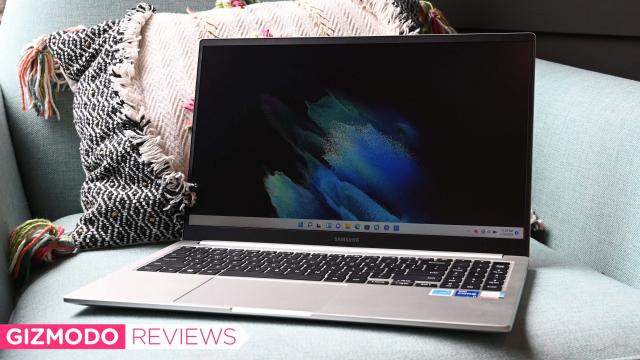For years, Samsung laptops reminded me of a kid who was forced by their parents to play sports. They keep showing up, but the obvious lack of effort made you wonder if they even want to be there. Recently, though, Samsung has started to kick the ball in the right direction. Products like the Galaxy Book Pro 360 and Galaxy Chromebook 2 are successful because they borrowed the best elements of Samsung’s beloved smartphone series.
So when I saw the Galaxy Book, a $US750 ($1,041) clamshell laptop (our review unit costs $US1,000 ($1,388)) under Samsung’s “Galaxy” brand, I figured it could be a device to recommend to the many folks who ask me for a capable Windows PC that costs under a grand. I was hoping Samsung had trickled down some of its better laptop features to this mid-range device in the same way HP has done with its Envy lineup, but alas, those tasty treats are reserved for more expensive products.
To be honest, this review hasn’t been easy to write. You see, great gadgets are fun to test because they’re exciting, and terrible ones are easy to review because they let you turn pent-up, pandemic-fuelled frustration into 2,000 words. This Galaxy Book is somewhere in the boring middle space — a device so inoffensive as to be offensive, so vanilla as to be completely flavourless.
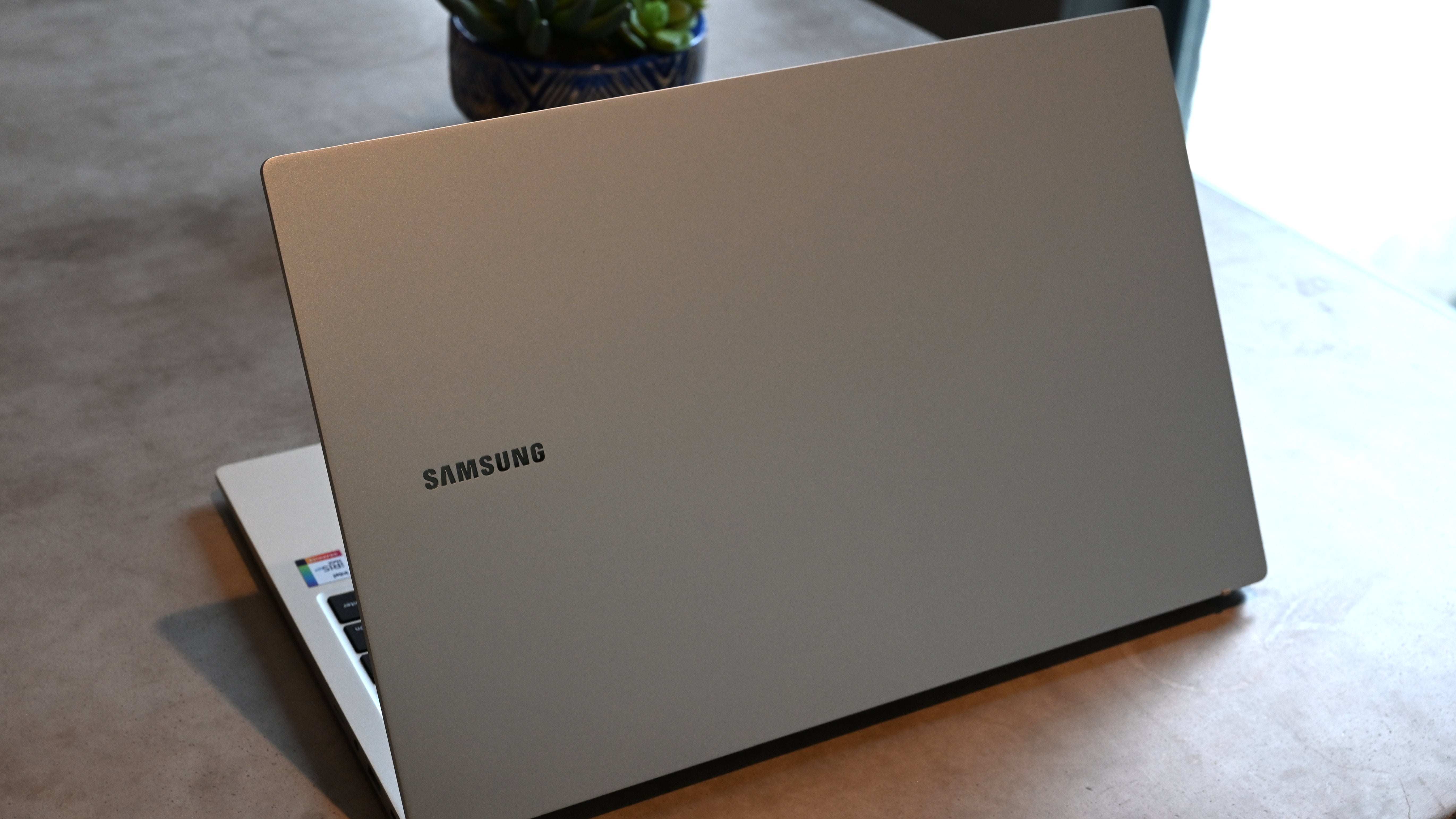
Samsung Galaxy Book
What is it?
A portable Windows laptop with a 15.6-inch display.
Price
Starts at $US750 ($1,041) with a Core i5 but goes up to $US1,000 ($1,388) with upgrades.
Like
Slim, durable chassis; fast CPU performance; great selection of ports
Don't Like
Poor viewing angles; anonymous styling; keyboard isn't backlit; dreadful webcam; no fingerprint reader
Practical but Lifeless Design
But enough of the melodramatics, this is a product review for goodness sake, so I’ll reluctantly give you a quick rundown of the Galaxy Book’s design. It’s a rectangle; it’s silver everywhere; and there is a Samsung logo on the lid. If you didn’t already guess it, the display is 16:9 and there are no extra letters before “LCD.” And just as I was getting hyped about a feature, that black rectangle on the top row of keys is actually just a power button, not even the most basic form of biometric login.
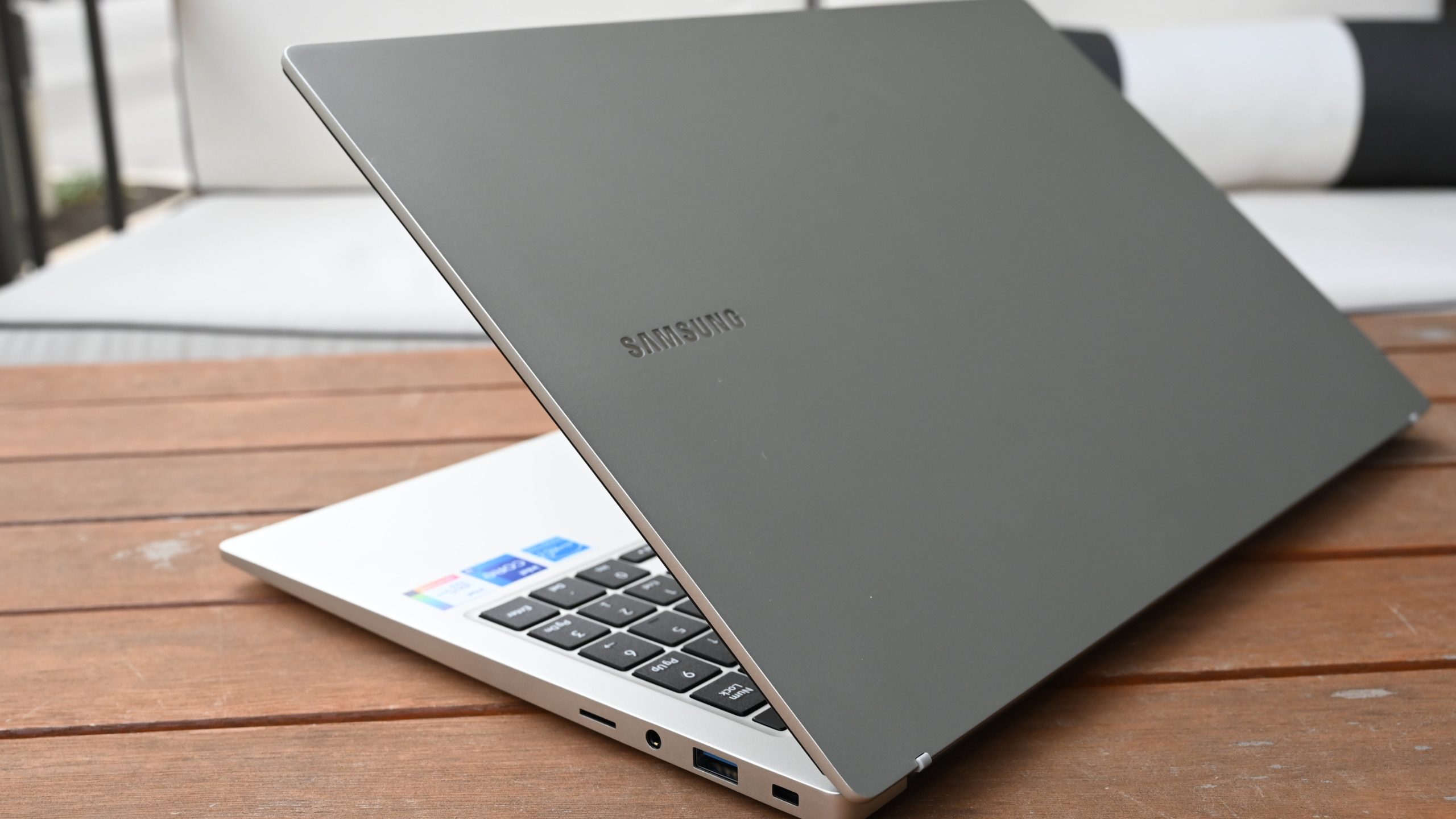
If this were me 10 years ago walking down the aisles of Fry’s (RIP), I would have wandered right past the Galaxy Book on my way to desktop components and energy drinks. Perhaps the slim bezels would have caught my eye, and if I’d picked up the laptop, I might have been impressed by its sleek 0.6-inch chassis, which makes it portable even by today’s standards. I also can’t fault the build quality — the 180-degree hinge is stiff yet rotates smoothly and the aluminium surfaces don’t budge when I apply pressure to the lid and keyboard.
And while it may not be exciting, the Galaxy Book earns practicality points for its generous selection of ports. On the left edge of the laptop are two USB Type-C inputs, a USB Type-A 3.2 port, and an HDMI 2.0 input. Turn to the right side and you’ll find a second USB-A port, a headphone jack, a microSD card slot, and a lock slot. It’s everything you need to connect a mouse, a monitor, or an external keyboard.
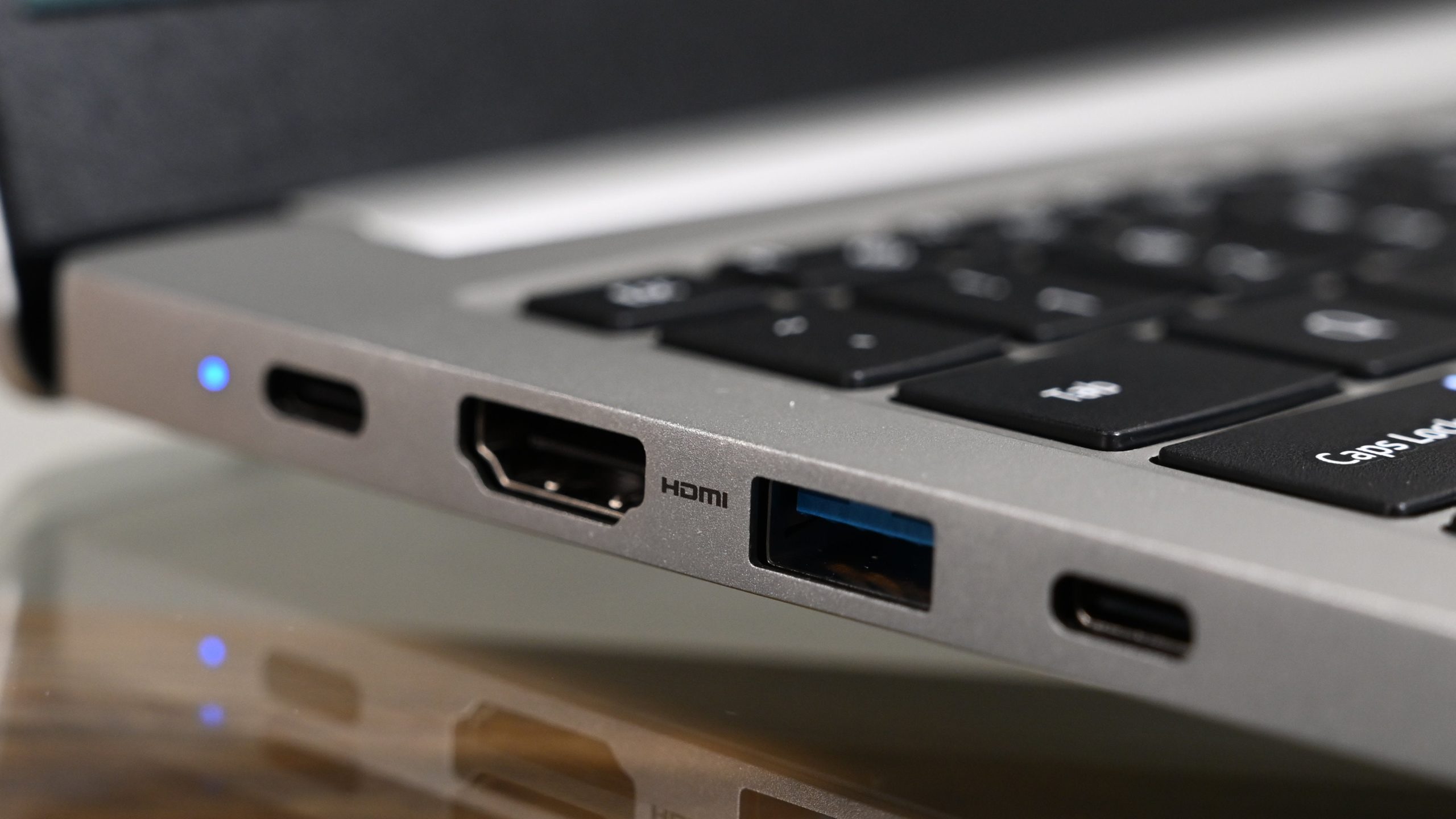
You might want the latter because the Galaxy Book’s keyboard is shallow. Otherwise, it’s fine. The keys are nicely spaced and big enough for larger hands, and there’s even a cramped number pad on the right. Nothing here is undersized except the arrow keys, and those are cleverly separated in an inverted-T shape, which makes them easy to find without looking down. What I can’t excuse is that these keys aren’t backlit — charging $US1,000 ($1,388) for a laptop without illuminated keys in 2022 is downright offensive.
While I had no problems adjusting to the keyboard, the keys themselves lack the satisfying tactility that’s becoming increasingly rare on ultra-portable laptops. I typed at a speedy 114 words per minute with a 96% accuracy on a typing test, which can be attributed to the shallow depth of the keys and low actuation required to register a keystroke.
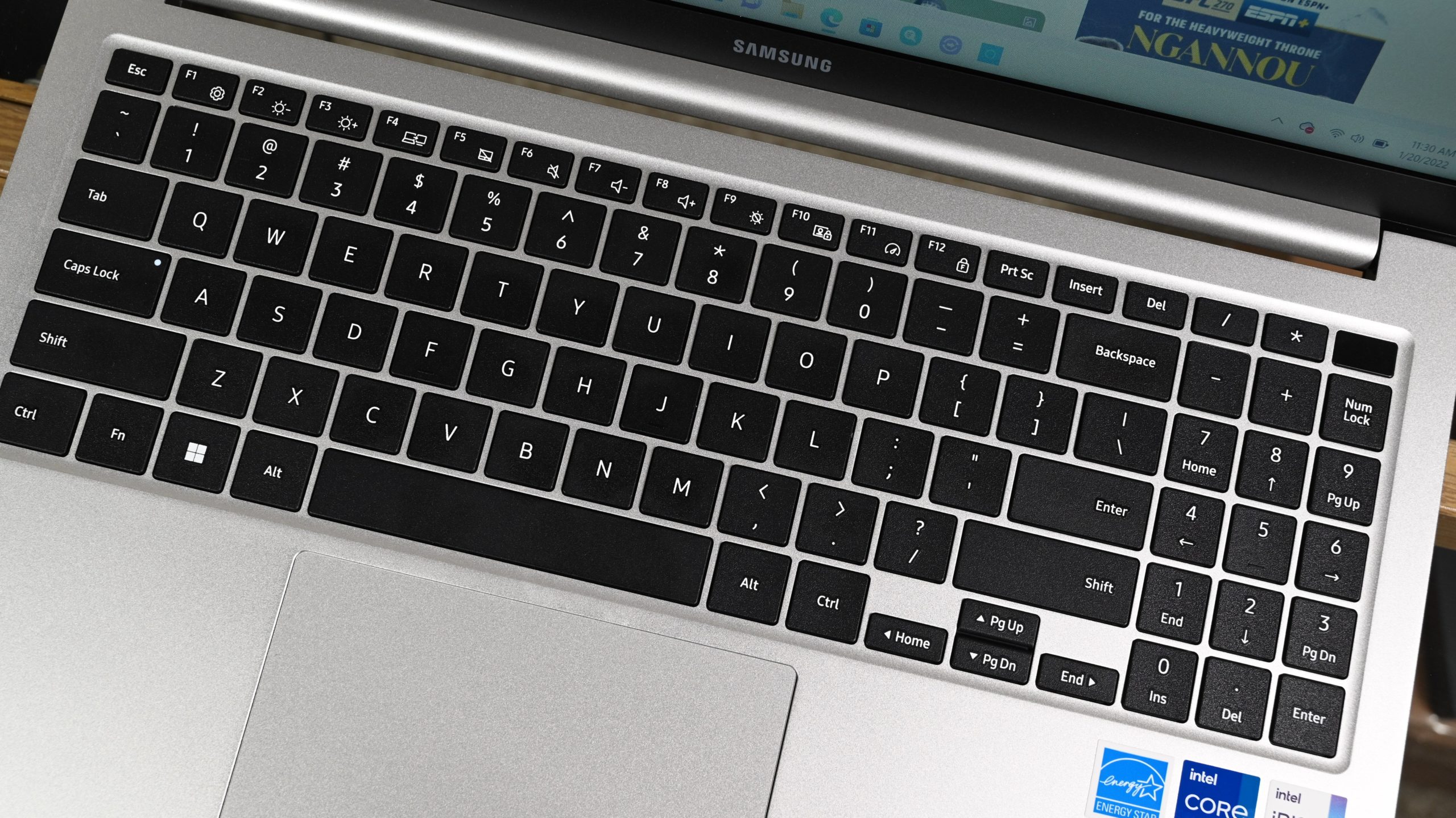
The touchpad is also just OK. The surface is large and I moved my cursor around Windows 11 with ease, but my fingers didn’t glide as easily on this plastic rectangle as they would on glass. The loud and stiff left- and right-click buttons are also a miss.
A Surprisingly Poor Display
What bothers me the most is the screen — yes, the low point of the Galaxy Book is the one thing you’d expect a leading display supplier to nail. Holding back the laptop’s 15.6-inch, 1080p anti-glare panel are poor viewing angles. Sit to the side a few degrees or get lazy about tilting the lid directly at your face and the colours wash out.
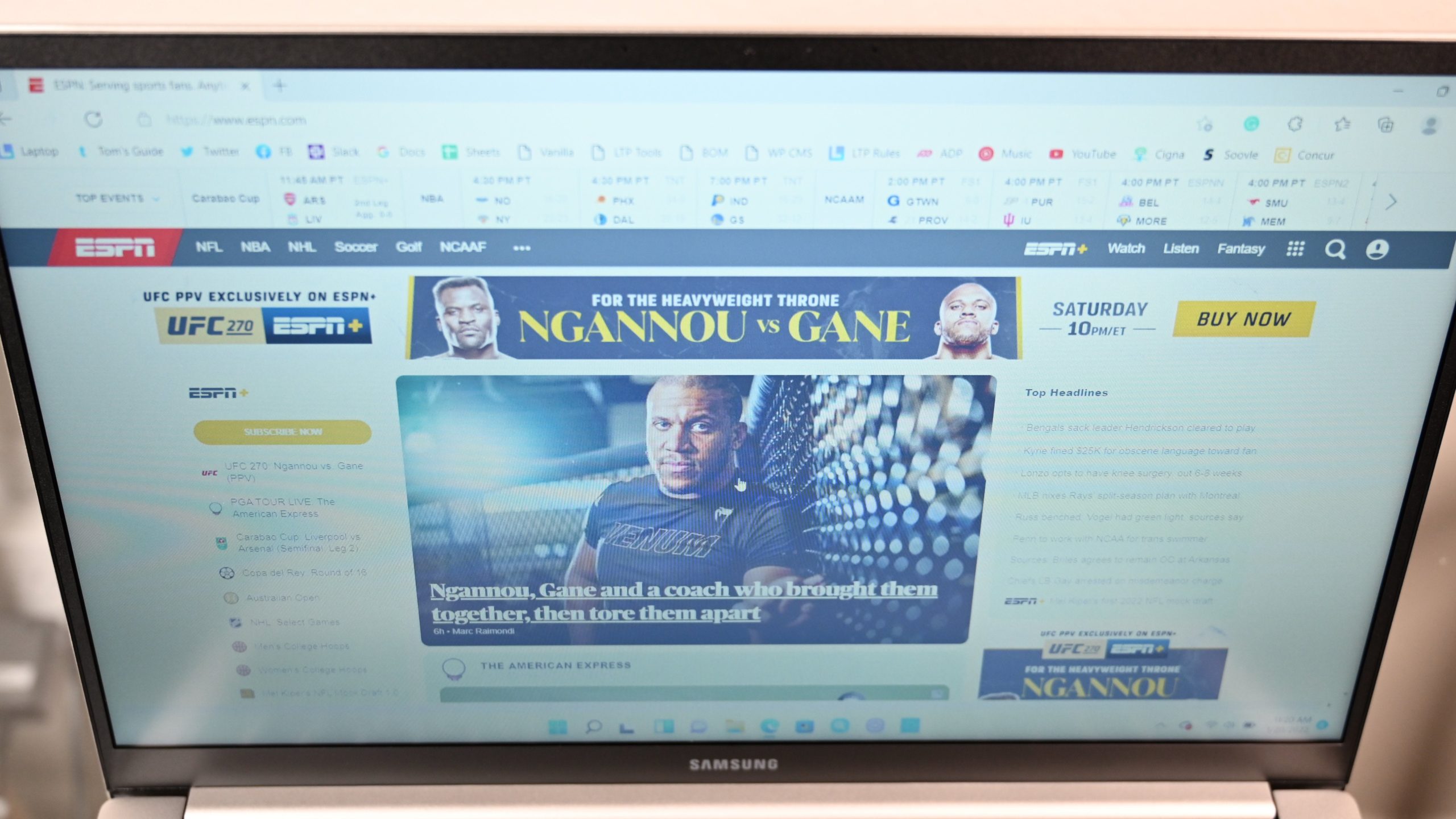
Take ESPN’s webpage, for example. When I’m looking at the screen from straight-on, the background is grey while the content blocks are white. Tilt the panel even a few degrees downward and everything looks white. When I tilt it upward, the opposite effect happens and contents appear dark.
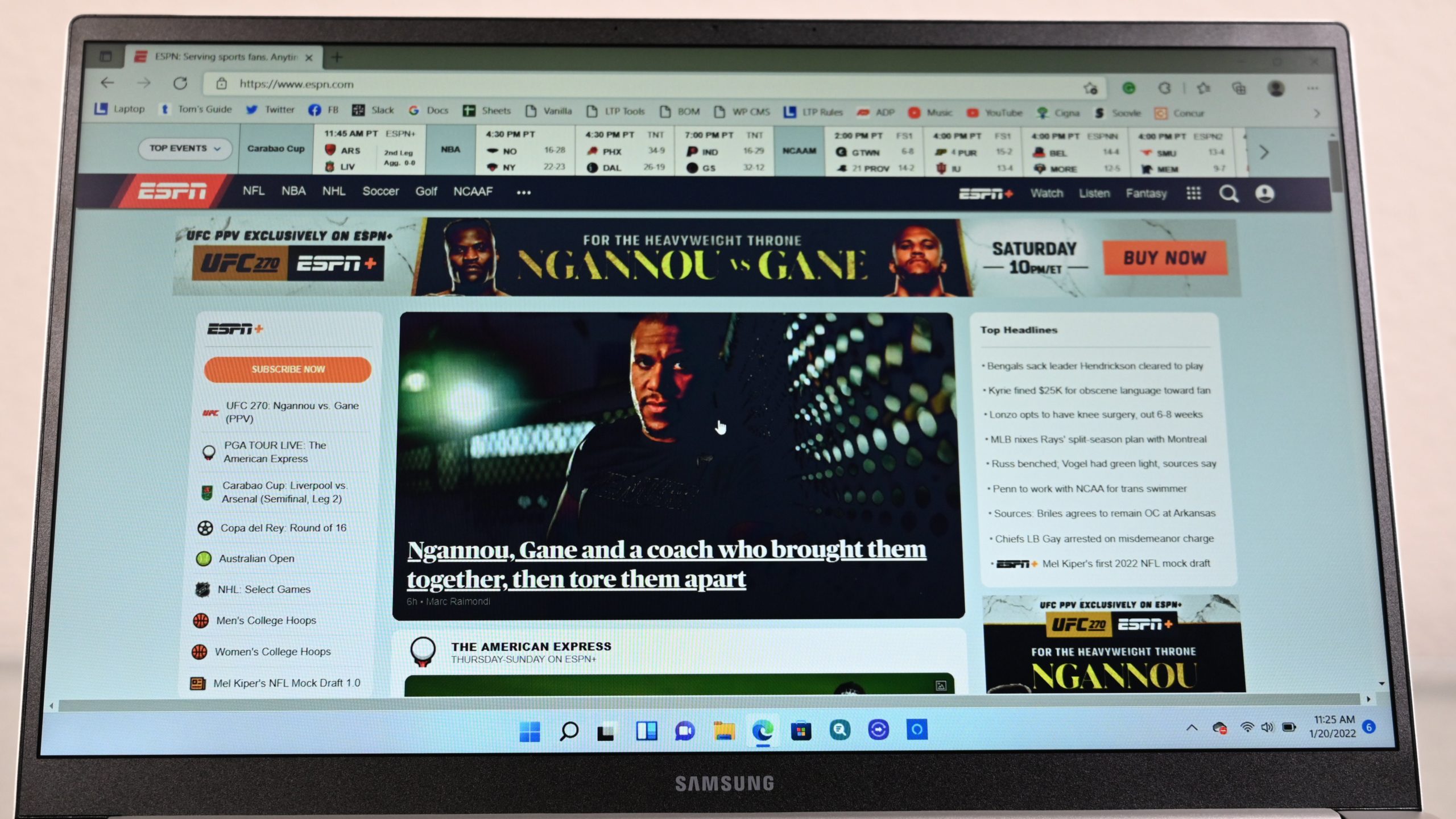
Things got much better when I angled those pixels directly into my retinas. Graphics centered on the screen were colourful and, because the panel is matte, it can be viewed in bright conditions without glare, even though our colorimeter clocked its max brightness at a lowly 235 nits.
I wish I could say more focus was put on the speakers but these are your run-of-the-mill dual drivers. They sound fine but don’t have even a hint of bass and are only loud enough for solo listening. I should also take a second to warn you about the 720p webcam which, to put it lightly, is tragic.
Fast Performance, but Ignore the Discrete GPU
The Galaxy Book’s saving grace is its speedy performance. For the price of a base model flagship laptop, you can get the Galaxy Book fully loaded with an Intel Core i7-1165G7 CPU, 16GB of RAM, and a 512GB SSD.
I didn’t encounter any stuttering after loading dozens of Google Chrome tabs during work nor did I notice any lag while streaming Australian Open tennis on ESPN+ on the weekends. Better yet, the Galaxy Book never yelled at me or got too hot, even after I played a 20-minute, 1080p video on YouTube on top of several other active background processes.
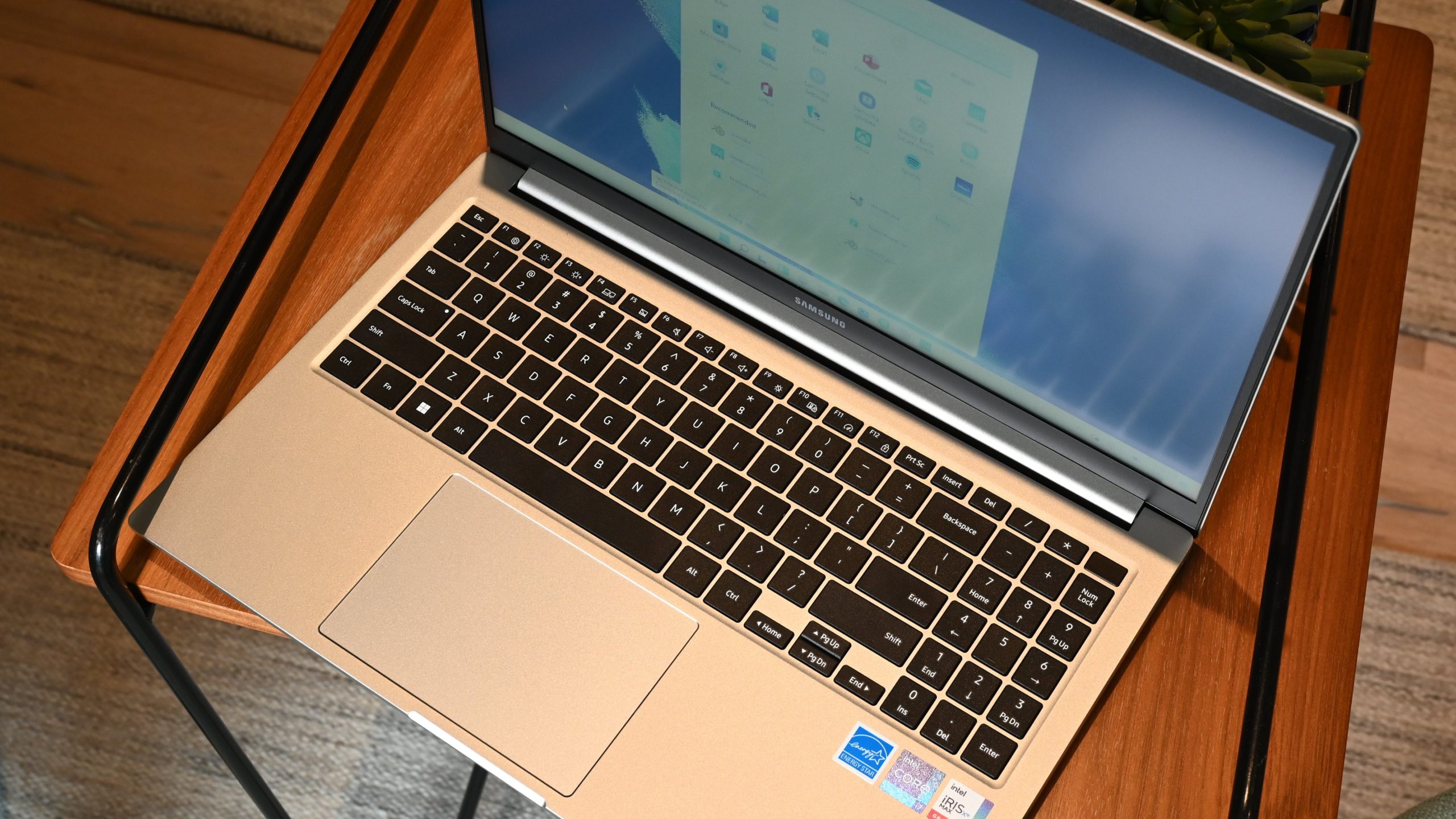
I’ve made it sufficiently clear that the Galaxy Book isn’t an interesting laptop, but there is one spec that caught my eye: Iris Xe Max graphics. Released last year, Iris Xe Max is Intel’s first discrete mobile GPU, and while the company admits it’s not meant for gaming, the solution supposedly improves video encoding and graphics editing.
That much seems true. The Galaxy Book played Civilisation IV at 1080p resolution a barely playable 32 frames per second, but otherwise did well in our performance benchmarks when compared against other ultra-portable laptops with integrated graphics or entry-level discrete solutions. On Geekbench 5, a synthetic test used to determine overall performance, the Galaxy Book hit a multi-core score of 5277, which is just shy of the Surface Laptop Studio (5879). When rendering a 3D image in Blender using the GPU, the Galaxy Book took 8 minutes and 45 seconds, which is much faster than the Lenovo ThinkPad X1 Titanium Yoga (13:22) though not any better than the Surface Pro 8 (8:30).
Keep in mind that Intel already announced 12th-gen Core mobile chips, which balance performance and efficiency cores to supposedly deliver faster speeds and longer battery life. Samsung will presumably update its Galaxy laptops with these new chips once they become available, so we recommend waiting a few months if you’re not in a rush. I should also point out that the Galaxy Book uses U-series chips, so you won’t get the same performance as other (typically chunkier) 15-inch laptops that use H-series processors.
Not the Best Battery Life for Getting Work Done
I’m not sure if Intel’s feeble discrete GPU is to blame, but I was expecting more from the Galaxy Book than 7 hours and 45 minutes of battery life on our runtime test, which involves playing a video at 200 nits of brightness until the notebook powers down. The Galaxy Book’s below-average runtime was well short of the Galaxy Book Pro (14:46) and just about matched the Acer Aspire Vero (7:47).
To make matters worse, the included charging cable, while mercifully USB-C, is rather short at about seven feet. On the other hand, the power adaptor is about the size of the ones you used to get with your smartphones. It’s easy to overlook such a small detail, but trust me, throwing this petite charger in your backpack or luggage instead of a giant power brick saves considerable space.
Worth Buying?
The Galaxy Book is for folks who want a laptop that gets the job done — one without bells and whistles to complicate things. It’s for people who don’t particularly care about technology but need something super simple in a portable package with a large screen and solid build quality. And while this isn’t any tech reviewer’s cup of tea, the truth is that you probably know someone who fits the bill — be it a parent, a grandparent, or a high schooler.
The problem is that you don’t need to spend $US1,000 ($1,388) to get a basic computing experience. If you like the idea of the Galaxy Book, I suggest going for the $US750 ($1,041) model and dropping to a Core i5 CPU, which is plenty fast for a device best used for browsing the web and running basic apps. Or, better yet, you could save even more cash on something like the Google Pixelbook Go or Lenovo Yoga C740 and get additional features plus longer battery life.
In the end, the Galaxy Book is a clear reminder that Samsung’s laptop division plays second, or perhaps fifth, fiddle to everything else the Korean tech company has going on — so if you need a capable sub-$US1,000 ($1,388) laptop, look elsewhere.
